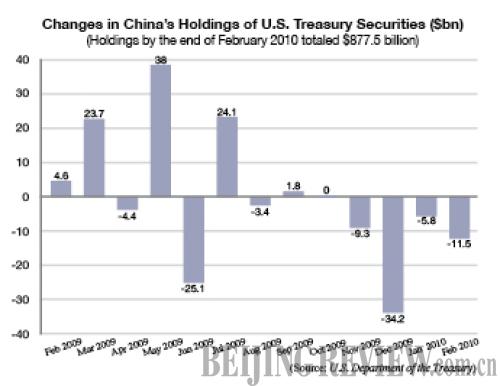| 
Numbers of the Week
$7.52 billion
China's outbound direct investments in non-finance sectors totaled $7.52 billion in the first quarter, up 103.3 percent year on year, said the Ministry of Commerce.
75.8%
The combined profits of China's state-owned enterprises climbed 75.8 percent in the first quarter to 408.82 billion yuan ($59.9 billion), said the Ministry of Finance.
TO THE POINT: As illustrated by the current session of the Canton Fair, China's exports are staging a swift comeback, though uncertainties lie ahead. In its drive toward a more sustainable economy, the country bumps up lending for the western regions and small businesses. Foreign banks are losing ground in China due to a lending spree by local rivals. Online travel agents scramble to pledge the lowest prices for hotels as they tap an over-crowded market. Also under pressure is China Mobile that recorded slower profit growth for the first quarter of the year. China launches an international commodities trading platform in Beijing on April 20.
By HU YUE
Fairing Well
Where is China's crisis-stricken export market heading? The latest session of the China Import and Export Fair, known as the Canton Fair, a bellwether for the trade climate, could provide some clues. With more foreign buyers roaming the fair's vast halls, the bustling trade show is providing a vivid illustration that an export turnaround is already underway.
The first phase of the Canton Fair from April 15 to 19 witnessed export deals worth $17.1 billion, up by a robust 9.8 percent from the fair's last session in October 2009, said Canton Fair General Secretary Wang Zhiping. Given the export downturn that saw financially distressed foreign buyers purchase less or demand lower prices, this upward trend is a reason to rejoice.
Though in part driven by restocking of Western factories low on inventories, the export recovery is largely a result of recovering overseas demands, said Wang.
But the sector is not without concerns. A note of caution came from He Weiwen, an economics professor of the University of International Business and Economics. "With the European debt crisis escalating, the euro is likely to lose some value against the Chinese currency yuan, putting Chinese exporters on the hook," he said.
In the long run, Western countries are refocusing on manufacturing and exports, intensifying competition with China, He said.
Rebalancing Commitment
While reining in excess liquidity, China has left the lending tap wide open for small businesses, western regions, consumption and agriculture as the country gears up to rebalance the economy.
"Efforts have been doubled to encourage financial institutions to lend more to areas that are crucial for the national economy or those that have yet to receive adequate credit support, such as agriculture and small enterprises," said Zhang Tao, Director of the Financial Survey and Statistics Department of the People's Bank of China, the central bank.
The new loans extended to underdeveloped western regions in the first quarter grew by 29.6 percent year on year, 5.8 percentage points higher than the eastern regions, according to the central bank.
Meanwhile, outstanding loans for small enterprises had totaled 6.3 trillion yuan ($922.7 billion) by the end of March, an increase of 23.9 percent from a year ago—6.5 percentage points higher than that for large enterprises.
Banking Woes
While Chinese banks enjoyed a lending spree last year, their foreign counterparts in China seem to have lost some of their fizz.
Foreign-funded banks accounted for a minimum 1.71 percent of the country's banking assets last year, according to a central bank report, down from 2.16 percent in 2008 and 2.38 percent in 2007.
A wild expansion of foreign banks in China has occurred over the past few years, drawing strength from their deeper and more sophisticated product offerings and global client relationships. But as they spread across the country, they face daunting challenges in private banking and wealth management from Chinese rivals, which are eager to diversify away from traditional lending business.
Foreign banks entering new markets frequently use competitively priced corporate loans to form initial relationships with new clients. But this door has been closed by the low margin and availability of loans from the large Chinese domestic banks, said Raymond Yung, PricewaterhouseCoopers' Financial Services Leader for China.
| 